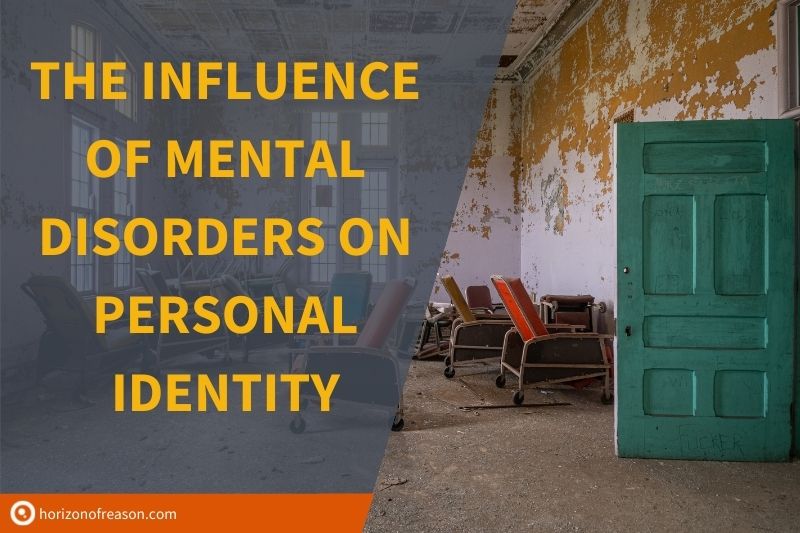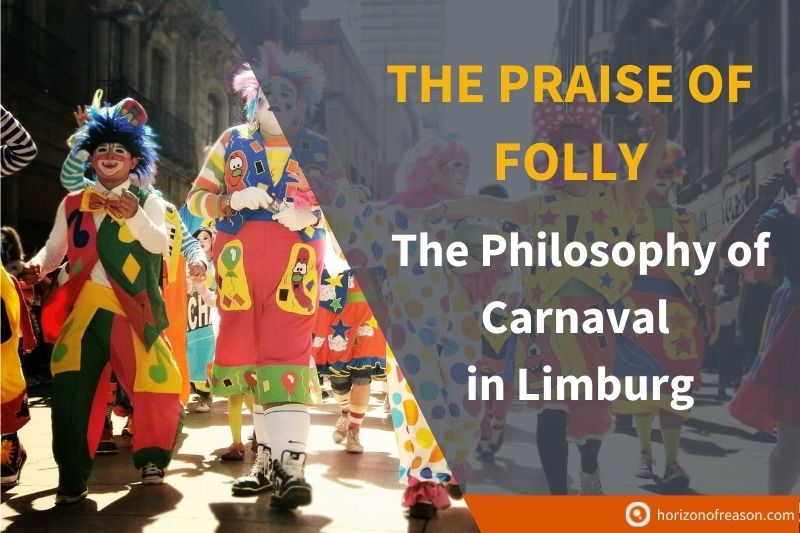
The Influence of Mental Disorders on Personal Identity

Peter Prevos |
2299 words | 11 minutes
Share this content
Our concept of self and identity are highly dependent on our surroundings. Our identity is inherently social in that others are involved in its construction. Our social identity, the way we identify ourselves with the social groups we are a part of, is managed through careful impression management to try to have some influence on the way this identity is constructed.1 People are considered deviant when they are no longer willing or able to act following the rules of impression management. Because social identity is directly related to how others perceive somebody, deviance will have an impact on identity.
Some examples of behaviour that would be labelled deviant in popular culture or everyday discussions are sexual preferences other than heterosexual, wearing the ‘wrong’ type of clothes or behaviour associated with mental illness. Because of the wide range of possible deviant behaviours, almost every behaviour could be labelled as deviant, depending on the context in which it is defined. One particular type of deviance that can have significant effects on identity is a behaviour associated with a mental disorder. The influence that deviant behaviour has on identity formation will be discussed in this paper, with particular focus on behaviour related to mental illness. It will be argued that changed societal attitudes towards mental disorders in the last three decades have mitigated the effect on identity formation.
Mental disorders
Mental disorder is a fuzzy concept which is impossible to define in discrete terms. In psychology, the terms symptom and syndrome define mental disorder, analogous to the way physical diseases are classified. The only difference between the way mental and physical conditions are defined are the types of symptoms. The symptoms of mental disorder can be a person’s behaviour, thoughts or feelings. A syndrome is a collection of interrelated symptoms in an individual and is considered a mental illness only if it causes a significant detriment to the person or their surroundings, it has an internal source and manifests itself involuntary.
The dominant classification scheme for mental disorders in contemporary psychology is the fourth edition of the Diagnostic and Statistical Manual of Mental Disorders (DSM), published by the American Psychiatric Association. The first edition of the DSM was developed in 1952 to increase the level of objectivity in the diagnoses of mental disorder. Subsequent versions of the DSM were designed to increase the consistency of diagnoses undertaken by different diagnosticians. This increased consistency resulted, however, is a loss of validity. The question that needs to be asked is whether the categories in the DSM are actual disorders or whether they are socially constructed.
Weiten argues that the rhetorical skills of the committee members compiling the diagnostics manual have been more important than scientific evidence.2 Common problems, such as ‘developmental coordination disorder’ in children (basically extreme clumsiness), are medicalised to create a market for the health industry, as inclusion in the DSM is a criterion for treatment to be covered by health insurance. Another problem with the descriptions in the DSM is that the defined symptoms are subjective and therefore, hard to measure.
Research shows that about twenty per cent of people will experience mental disease at some point in their life. From 1969 onwards, the total number of patient admissions in the USA has risen from 644 per 100,000 people to 860 in 1998. The number of people treated in private or public mental hospitals has, however, decreased from 45% in 1969 to 30% in 1998.3 The reason for this decrease in the number of people institutionalised is a shift in treatment methods. The number of people undergoing forms of treatment other than hospitalisation has subsequently increased. The number of people with outpatient treatment of mental disorder has, however, increased considerably. Following Weiten’s critical view on the DSM, this increase is most likely a result of the increased number in defined mental disorders, rather than a change in the actual occurrence in the population.
The types of mental disorder that people are perceived to have, the way other people react to them and the way conditions are treated are highly culturally dependent. Eating disorders caused by body image distortions are, for example, much more prevalent in Western culture than in Asian societies. A syndrome such as Koro—an incapacitating fear that the penis will withdraw into the abdomen and cause death—is almost uniquely diagnosed in South-East Asian cultures.
Deviance and Identity Formation
Different approaches to deviant behaviour have been proposed, each with varying views on the effect on social identity. The functionalist approach to deviance looks at to what extent human behaviour is functional or dysfunctional concerning the continuation of the social system. American sociologist Talcott Parsons looks at society as an organic system that needs to be kept in balance.
Parsons considers deviant behaviour a disturbance of this balance, which needs to be adjusted. Deviant members of society need to be brought back into the fold because society will otherwise disintegrate. Parsons anticipates what is later referred to as medicalisation of society and recognises that in the course of history, religious and legal definitions of deviant behaviour have been replaced by medical ones. People who display deviant behaviour are no longer predominantly looked at as sinners or criminals, but as sick people needing help. They do not require retribution or punishment, but treatment. Parsons believes that medicalisation of deviant behaviour is a form of humanisation of society. Deviance is no longer punished but treated, and the deviant is re-integrated into society.4
The functionalist approach to mental illness focuses on the effects of deviant behaviour on society as a whole and neglects the impact medicalisation on the individual. Functionalism has, because of this neglect of the individual, been criticised by proponents of the social construction and labelling accounts of deviance.
Social construction theory refers to deviance as an unstable product of the social context in which it is generated. Deviant behaviour is a socially constructed category without reality outside of the social context in which it is defined. The fact that mental disorder is a fairly common occurrence, that it is culturally dependent and the problems with objective diagnosis support the idea that it is a social construct, rather than a real disease.
Erving Goffman argues that being labelled as a person with a mental health condition and being hospitalised alters a person’s identity. Following Goffman’s theatrical metaphor of identity formation, this change can be seen as a case where the audience loses trust in the performance, frustrating the construction of social identity.
A mental disorder prevents people from playing the role they are anticipated to play. They are no longer able to present the ‘expressive coherence’ that makes a performance acceptable to the social surroundings. Erving Goffman emphasises that there is a discrepancy between our social and our private identity and those performances are therefore not genuine. Another reason why people with mental disorders are perceived as deviant is that they are in some cases unable to construct a performance that hides their identity—they are unable to present an identity that follows usual conventions. This inability to adhere to impression management social protocol is one of the mechanisms by which people with mental disorders can be labelled deviant.
Labelling theory distinguishes between primary and secondary deviance. Primary deviance is the result of biological, psychological or social factors. This behaviour might be considered unfavourable, but is usually incidental and is therefore not labelled deviant. An action is identified as abnormal, when it is given the label ‘mental disorder’, it can lead to secondary deviance.
Secondary deviance is caused by the reaction of others on the as deviant labelled behaviour. In the case of a mental disorder, secondary deviance usually leads to treatment and possible hospitalisation. The escalation from primary to secondary deviance is analogous to the cognitive perspective on mental illness in psychology. From this perspective, mental disorders are acquired, maladaptive ways of thinking that result from a person’s interaction with the social environment. Secondary deviance, caused by the reaction of the social climate on primary deviance, is a maintaining cause for a mental disorder. For example, a sufferer of depression might act in a manner that will cause friends and family to react negatively. This adverse reaction and possible labelling as ‘depressive’ can increase the level of depression, thereby amplifying the as deviant labelled behaviour. Secondary deviance can have profound effects on an individual’s identity, which can influence a person negatively as well as positively.
Link showed that people labelled as having a psychiatric disorder have less income and are more likely to be underemployed than similarly impaired untreated cases with similar backgrounds.5 Mental disorder can also have positive effects. It was found in several studies that a high proportion of artists and writers are diagnosed with cyclothymia—a condition characterised by short periods of mild depression alternating with short periods of hypomania. People with cyclothymia are generally more creative than people with more balanced moods and creative periods usually coincide with periods of hypomania.
Gove tries to find the middle ground between the functionalist and labelling views of deviance and the effects on identity. He argues that most mental patients experience labelling and stigma, but the results appear to be temporary and do not pose severe problems. From a lay perspective, the mentally ill are ‘dirty, bizarre, unpredictable and dangerous’, but when deviant behaviour normalises, the stigma disappears. Gove argues that the stigma does not cause long term problems and does, therefore not lead to secondary deviance and subsequent problems with identity formation.
The history of secondary deviance
The three different views presented in the previous section run parallel with the history of cultural attitudes towards mental disorders. Foucault outlines how the perception and treatment of mental illness changed in the time that also rational philosophy gained influence. Foucault argues that in medieval times and during the Renaissance, people were fascinated by madness. He sees evidence of this attitude in literature, painting, philosophy and theology. To the French philosopher Montaigne (1533–1597), madness was not an insult to reason, but a part of reality that has to be accepted. Madness was considered not to be the opposite of reason, but the horizon of reason and accepted as an integral part of human experience.6
During the seventeenth century, however, madness was contrasted with rational behaviour, and it became a form of deviant behaviour. As rational philosophy gained more influence, society started to turn against everything that was considered irrational. The seventeenth century was also the time that the first mental institutions were built to remove people that were deemed to be insane from society. Foucault sees these institutions as a form of control over deviant behaviour, an attempt to remove irrational behaviour from society.
This strategy against deviance was not a historical oddity. Sutton argued that in the early twentieth century, failure to develop effective policies against poverty was a contributing cause to the great number of people being committed to mental asylums in the United States. People living in poverty and behaving deviantly were labelled as mentally ill to be able to segregate them from mainstream society.7
The attitude towards the mentally ill did not start to improve until the nineteenth century. Societal outrage regarding the treatment of the mentally ill sparked a movement promoting ethical treatment. The focus shifted from isolation to treatment, attempting to cure the patient and integrate them back into society. David Rosenhan undertook an insightful study into the treatment of people in mental institutions.8
In this study, Rosenhan and seven other people feigned mental illness to gain admission to different mental hospitals. They reported that the pseudopatients’ normal behaviours were frequently interpreted as symptoms of mental illness. Rosenhan’s findings support the social construction account of deviance and show that mental health care professionals were unable to see beyond the label of being mentally ill.
The situation has, however, changed considerably since Foucault and Rosenhan have written their criticism of the mental health industry. The American Psychological Association warns against the effects of labelling and recommends that one does not speak of a ‘schizophrenic’ or ‘anorexic’, but somebody suffering from schizophrenia or anorexia. The types of treatment have also changed in the last decades. Fewer people are hospitalised, and many alternative and highly successful programs for helping people with a mental disorder have been developed.
Mental disorders are becoming more accepted, which leads to a reduction in secondary deviance and subsequent adverse effects on identity formation. The public face of organisations like Beyond Blue, the national depression initiative, and movies such as A Beautiful Mind show that living with a mental disorder is becoming acceptable. Our highly individualised culture celebrates deviant behaviour. People are proud of being different from others, illustrated by, phenomena such as Gay Pride parades and the many youth subcultures. The more mental illness is accepted by society, the lower the risk that it will lead to secondary deviance and associated adverse effects on identity.
Notes
Gray, P.: 2002, Psychology, Worth Publishers.
Weiten, W.: 1995, Psychology: Themes and variations, 4th edn, Brooks / Cole Publishing Company, Pacific Grove).
Gove, W.R.: 2004, The career of the mentally ill: An integration of psychiatric, labelling/social construction and lay perspectives, Journal of Health and Social Behaviour 25(4), 357–375.
Widdershoven-Heerding et al., C.: 1995, Wetenschapsleer (Philosophy of science), Open Universiteit, Heerlen.
Link, B.G.: 1987, Understanding labelling effects in the area of mental disorders: An assessment of the effects of expectations of rejection, American Sociological Review 52(1), 96–112.
Foucault, M.: 1971, Madness and civilization. A history of insanity in the age of reason, Routledge.
Sutton, J. R.: 1991, The political economy of madness: The expansion of the asylum in progressive America, American Sociological Review 56(5), 665–678.
Rosenhan, D.: 1984, On being sane in insane places, in J. Douglas (ed.), The sociology of deviance, Allyn.
Share this content


